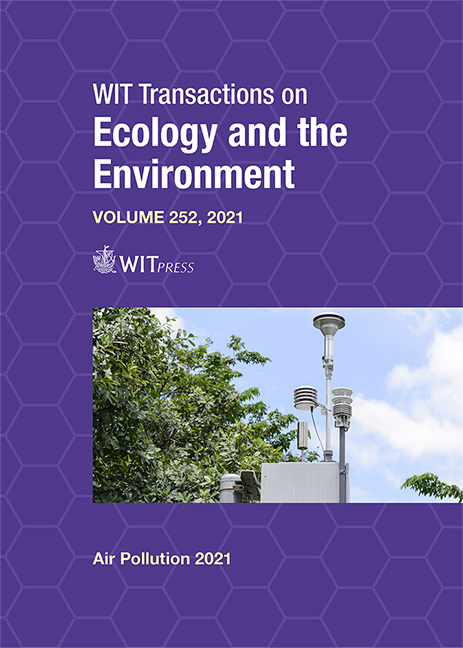EL NIÑO SOUTHERN OSCILLATION (ENSO)-INDUCED PM10 VARIABILITY IN MINING AREAS WITHIN THE 2014–2017 PERIOD
Price
Free (open access)
Transaction
Volume
252
Pages
10
Page Range
213 - 222
Published
2021
Paper DOI
10.2495/AIR210191
Copyright
Author(s)
HELI A. ARREGOCÉS, ROBERTO ROJANO, GLORIA RESTREPO
Abstract
Given that El NiÑo Southern Oscillation (ENSO) phenomena had significant environmental impacts in 2015–2016, this study presents an exploratory analysis of PM10 variability in open-pit mining areas in northern Colombia. PM10 and meteorological variables were measured at three locations, and analyses were performed. The results obtained showed that ENSO plays an important role in the temporal distribution of daily precipitation, and its occurrence resulted in an 8.3% decrease in annual average precipitation within the period of February 2015–May 2016. However, it had no significant effect on temperature, relative humidity, and wind speed within the study period. Further, the annual mean PM10 concentration corresponding to all the stations considered in this study between 2014 and 2017 was 34 µg/m3 (95% CI, 33–35 µg/m3), and the standard deviation was ± 11.59 µg/m3. The individual arithmetic means of PM10 concentrations at the different stations were 1.11–2.07 times the WHO air quality guidelines for PM10 but did not exceed the maximum level permissible specified by the Colombian norm. Furthermore, the average PM10 concentrations in all the samples corresponding to the El NiÑo classified Oceanic NiÑo Index (ONI) phase (37.14 µg/m3; CI95% 36.06–38.22 µg/m3) were numerically higher than those corresponding to the neutral classified ONI phase (32.54 µg/m3; CI95% 31.82–33.27 µg/m3), and the correlation coefficients between PM10 and meteorological parameters were found to be relatively low.
Keywords
PM10, ENSO, ONI, variability, air quality





